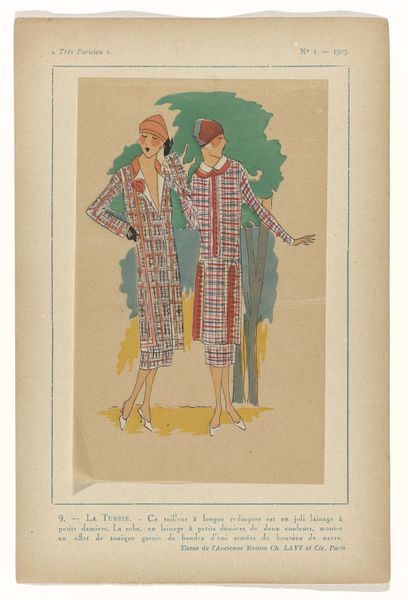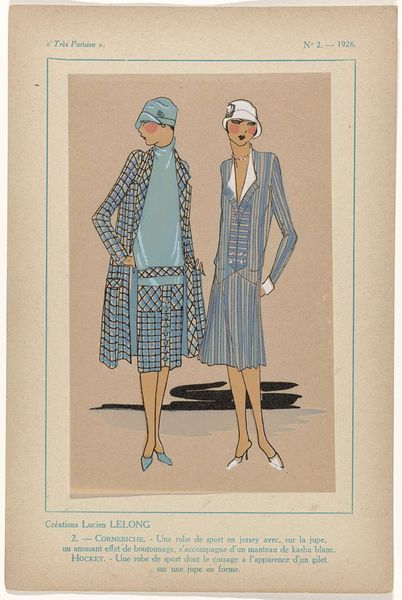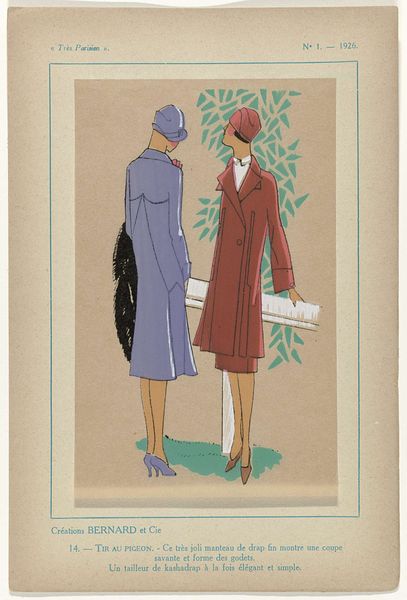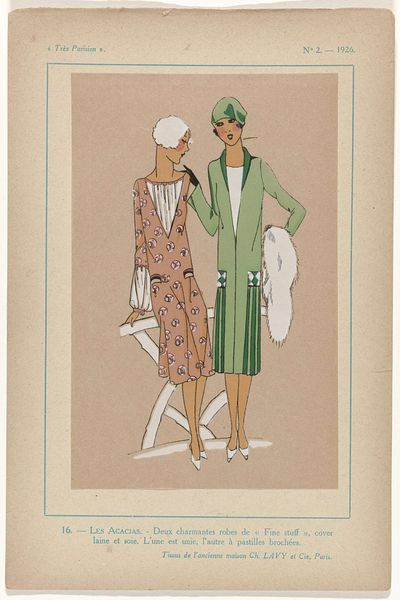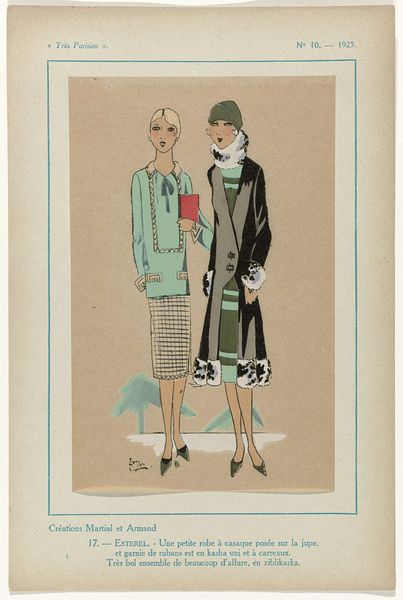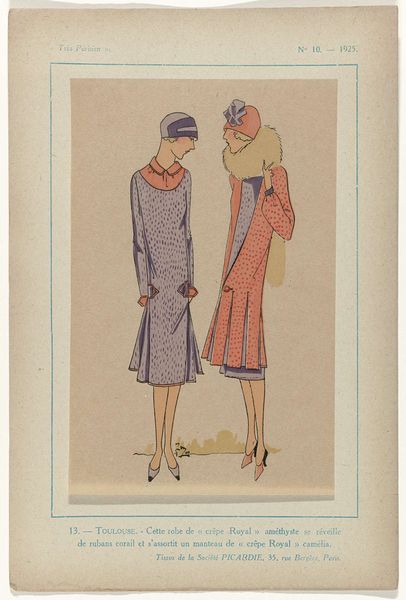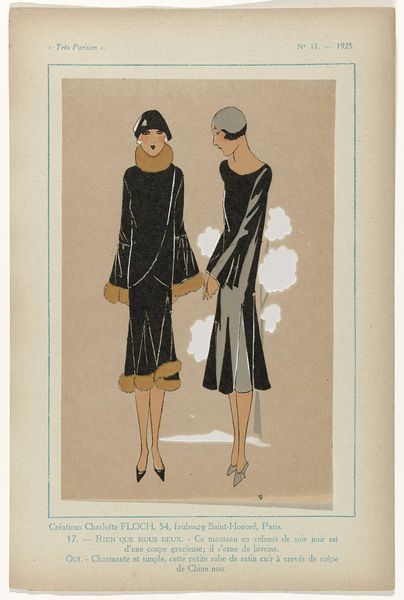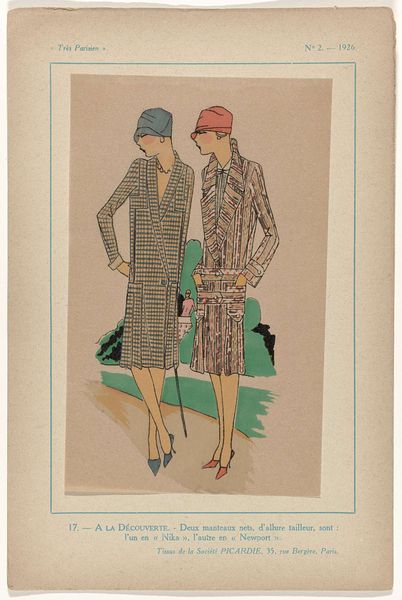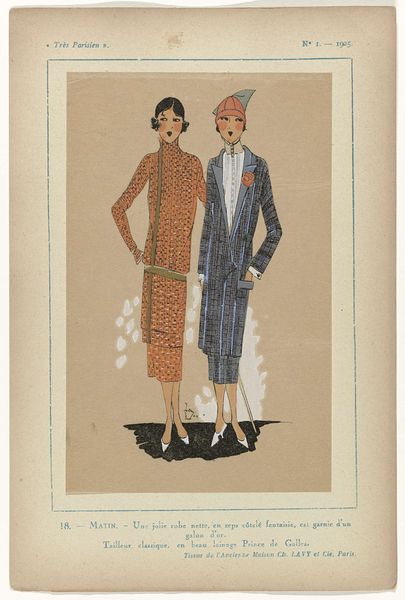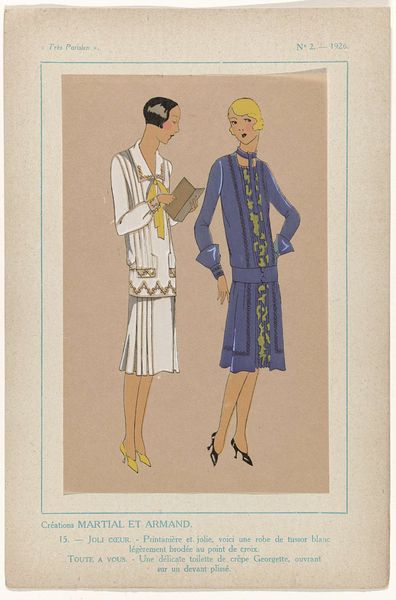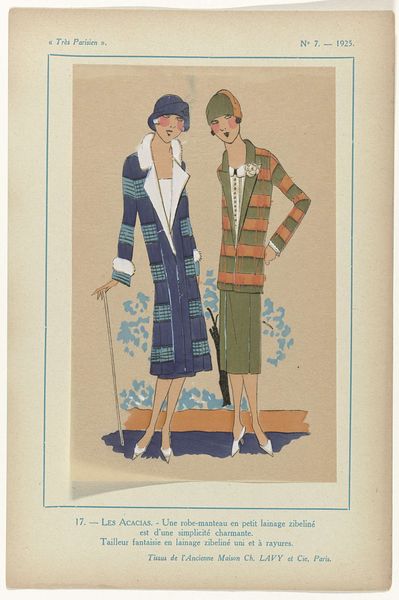
Très Parisien, 1926, No. 2, Pl. 18: - 5 C.V. Une robe de kash (...) 1926
0:00
0:00
drawing, ink
#
portrait
#
art-deco
#
drawing
#
ink
#
watercolour illustration
Dimensions: height 195 mm, width 120 mm, mm
Copyright: Rijks Museum: Open Domain
Editor: This is a watercolour illustration entitled "Très Parisien, 1926, No. 2, Pl. 18: - 5 C.V. Une robe de kash (...)" by G-P. Joumard from 1926. It's created using ink and held at the Rijksmuseum. The drawing presents two women dressed in stylish outfits; the style appears to be art deco. The composition has a strong illustrative quality and makes me think about fashion and gender roles. How do you interpret this work? Curator: It is fascinating, isn’t it? On the surface, it's a charming depiction of 1920s Parisian fashion. But let’s delve deeper. The rise of Art Deco coincided with significant social shifts for women, most visibly through their increased engagement in society and changing fashion norms, as displayed here. The "kasha" material being advertised—does this imply luxury accessible only to certain groups, potentially excluding others? Who is really represented by this image, and whose voices are unheard? Editor: That's an interesting point. I hadn't considered the socioeconomic aspect so explicitly, but you're right. It's marketing aspiration. Were women restricted from working in the Art Deco Era? Curator: In some ways yes, in others, the new social roles for women of the roaring twenties opened a venue for new female artists in commercial enterprises and design industries. Many women began working but might have found the highest level of economic mobility unavailable. Examining the creator could tell us more: What opportunities were accessible to female artists like G-P. Joumard during this period? Editor: This makes me rethink the artwork. It appears frivolous at first, but in its representation of the era’s fashions and consumer culture, it speaks to the social and economic tensions of the time. I initially saw stylish women; now, I perceive these illustrations as embedded in a larger narrative of class and evolving gender roles. Curator: Precisely. Art doesn’t exist in a vacuum, and by exploring these connections, we can achieve a far richer understanding of it.
Comments
No comments
Be the first to comment and join the conversation on the ultimate creative platform.
